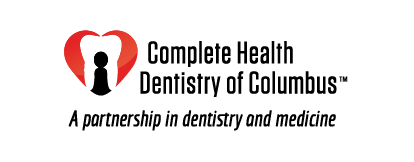Heart Talk - January 2019
- Eric Goulder, MD, FACC
- Jan 1, 2019
- 3 min read
The Celebrity Heart Disease Epidemic: Could It Be Prevented?
Heart-healthy and Stroke-free Living with Eric A. Goulder, MD, FACC

HEART ATTACKS AND STROKES ARE PREVENTABLE
Every 43 seconds someone in the U.S. has a heart attack, and every four minutes an American dies from a stroke. Very often, people who suffer these events were previously unaware they had CVD, the leading killer of men and women. The BaleDoneen Method offers a unique, precision-medicine approach to detecting, preventing and treating CVD that has been shown in two recent peer-reviewed studies to halt or reverse the disease — and rapidly shrink arterial plaque by more than 50%.
How do we achieve these results? Unlike standard care, which is based on checking patients for certain risk factors, the BaleDoneen Method also uses advanced laboratory and imaging tests to directly check all patients for hidden signs of arterial disease, which often develops silently over many years until it gets severe enough to trigger a heart attack or stroke if untreated.
A 6-STEP PLAN THAT CAN SAVE LIVES, HEARTS AND BRAINS
Our precision-medicine approach to heart attack and stroke prevention has six components:
EDUCATION
Knowledge is power! Our patients learn how heart attacks and strokes actually happen. A common misconception is that arterial disease is a plumbing problem, like grease clogging a kitchen sink, causing an artery to become so obstructed that flow of blood stops, resulting a heart attack or stroke. However, studies show that these events occur when plaque inside the artery becomes inflamed and ruptures explosively, leading to the formation of a clot that blocks the flow of blood to the heart or brain. Most heart attacks occur in arteries that are minimally blocked by plaque, with the clot creating the rest of the obstruction.
DISEASE
Early detection and treatment of arterial plaque is a key element of our evidence-based approach to prevention. We use advanced laboratory and imaging tests to directly check each patient for hidden signs of CVD, including a painless 15-minute ultrasound exam called carotid intima-media thickness (cIMT). A recent study of more than 10,000 people found that adding cIMT and the presence of plaque to traditional risk factors dramatically boosted the accuracy of 10-year predictions of heart attack and stroke risk.
FIRE IN THE ARTERIES
Chronic systemic inflammation, which we call “fire,” has been shown to be both a cause and an important treatment target for heart attack and stroke prevention. We use a “fire panel” of inexpensive blood and urine tests to check inflammatory markers. In 2017, results of the CANTOS trial published in the New England Journal of Medicine reported that anti-inflammatory therapies reduce risk for heart attack, stroke, other cardiovascular events and cancer by up to 50%. We also recommend natural ways to “fireproof” your arteries.
ROOT CAUSES
To put out fire inside the arteries, it’s essential to find out what’s causing it. For someone like Mike Ditka, who has now survived two heart attacks and a stroke, identifying the root cause is essential to prevent yet another recurrence. Our method checks for a wide range of root causes, including insulin resistance (the hidden cause of about 70% of heart attacks), metabolic syndrome, high blood pressure (the leading risk factor for stroke), sleep disorders and a dangerous cholesterol most doctors don’t check, even though it has been proven to actually cause heart attacks! One of our recent studies has been described as “landmark,” because it was the first to identify oral bacteria from gum disease as a contributing cause of CVD.
OPTIMAL GOALS
Just as a top-quality construction company may exceed the building code to make homes and offices even stronger and safer from fires, earthquakes and other catastrophes, in some cases, the BaleDoneen Method sets higher standards for treatment and prevention than those set by standard medical care. Work with your healthcare provider to set optimal, individualized goals to modify each of your risk factors. This approach, rather than one-size-fits-all goals set by the standard of care and based on average results from large studies, leads to superior outcomes and more effective heart attack and stroke prevention.
GENETICS
Basing care on each person’s unique genetic makeup is the ultimate in precision medicine. The BaleDoneen Method has used genetic testing for more than a decade both to identify patients with inherited risk for heart attacks and strokes and to guide the best personalized treatments of those risks, including a diet based on your DNA. In a 2018 study, we have also identified an easy, inexpensive way to lower heart attack risk for people who have type 2 diabetes, based on a one-time genetic test. Another recent study revealed that if people at genetic risk for CVD stay physically fit, their risk drops by about 50%, highlighting the amazing power of an optimal lifestyle to keep your heart healthy, no matter what is written in your DNA.
Read the Full Newsletter!

Комментарии